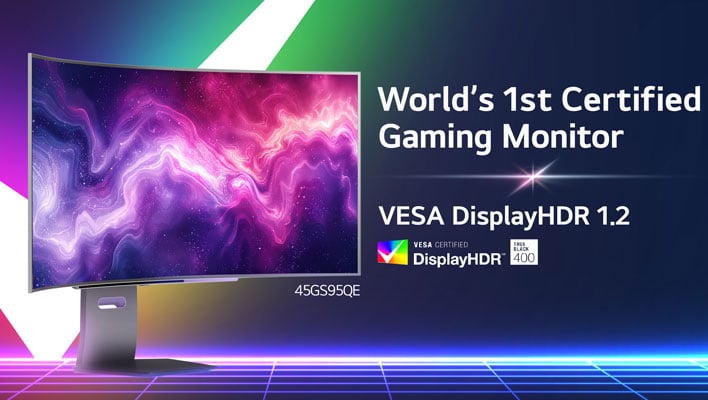
Well, that was relatively fast. Earlier this month, the Video Electronics Standards Association (VESA) unveiled a “major update” to its DisplayHDR specification, with version 1.2 adding key (and more stringent) metrics to earn a DisplayHDR badge. Now just over three weeks later, LG says its 45-inch UltraGear OLED monitor (model 45GS95QE-B) is the first gaming monitor to earn the designation.
It’s not just DisplayHDR 400 that’s affected. Here’s a look at the updated specs chart…
“These include adding a DCI-P3 color gamut requirement for the DisplayHDR 400 tier, while also increasing the DCI-P3 requirement for the 500, 600, and 1000 tiers to bring them to parity with the 1400 tier. DisplayHDR 1.2 also synchronizes the color bit-depth requirement of the 400 tier with all performance levels to require a minimum of 8 bit + 2 bit dithering using frame rate control (FRC),” VESA explained earlier this month.
What about LG’s monitor? It carries the DisplayHDR TrueBlack 400 badge, which is a variant of the DisplayHDR specification for OLED and micro LED (not to be confused with mini LED) displays. One of OLED’s strengths is its ability to display inky blacks by turning individuals pixels off.
Breaking News! 🚀
The LG UltraGear OLED Gaming Monitor 45GS95QE has just achieved the prestigious title of being the world’s first to receive VESA DisplayHDR 1.2 certification! 🏆
We’re committed to consistently raising the bar for HDR experiences, pushing boundaries, and never… pic.twitter.com/9J54xWtVmt
— LG_UltraGear (@UltraGearGaming) May 30, 2024
The UltraGear OLED 45GS95QE-B sports a curved 45-inch OLED panel with a 3440×1440 refresh rate. It also boasts a 240Hz refresh rate, a negligible 0.03ms response time (another inherent advantage of OLED), a 1,500,000:1 contrast ratio, and offers up to 98.5% coverage of the DCI-P3 color space.
